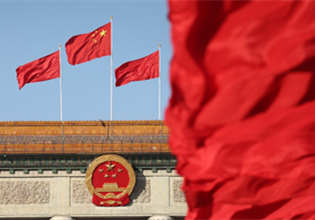A building of awareness
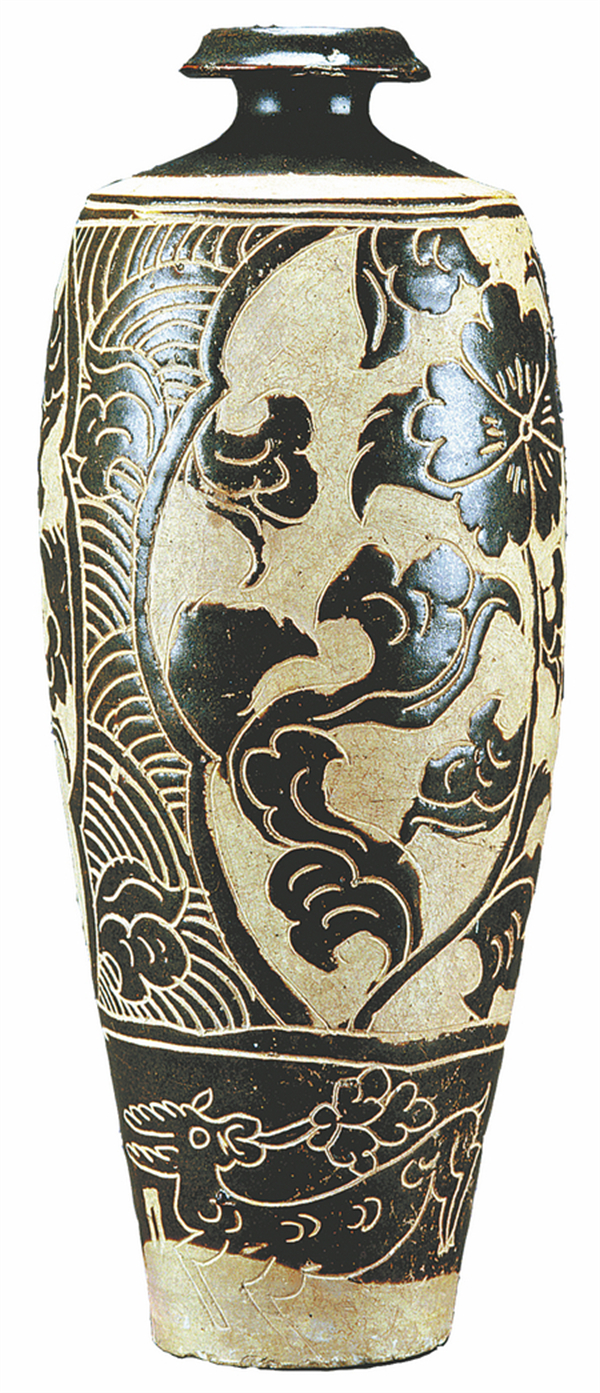
The Ordos Museum hosts a great number of cultural relics, including a black-glazed carved vase featuring peony and deer images.CHINA DAILY
Dedicated staff at Ordos Museum in Inner Mongolia work hard to raise the understanding and profile of the institution, and the culturally important exhibits within, through modern, innovative means, Yang Feiyue and Yuan Hui report.
A building that features a bronze-colored metallic exterior easily sets itself apart from its neighbors in downtown Ordos, a city in North China's Inner Mongolia autonomous region.
It resembles a massive weathered boulder, which is said to symbolize the rock-hard spirit of the city's residents.
Housing more than 80,000 valuable items, especially bronzeware, it's the Ordos Museum, an institution that, during the recent summer months, has attracted more than 10,000 visitors every day.
"A considerable number of them are in their 20s. Going to the museum seems to be an important part of their cultural life these days," says Li Rui, the museum's deputy curator.
Every item on display is accompanied by a detailed introduction to its history and background, and Li has come to know them like the back of his hand.
"The oldest exhibit is a skull fossil belonging to a member of the (archaic human) Hetao Man that dates back approximately 140,000 years," Li says.
He took a special shine to a crown, made for a woman, that is accompanied by earrings and a necklace.
The splendid and dazzling headpiece is adorned with turquoise, white jade, seashells and gold.
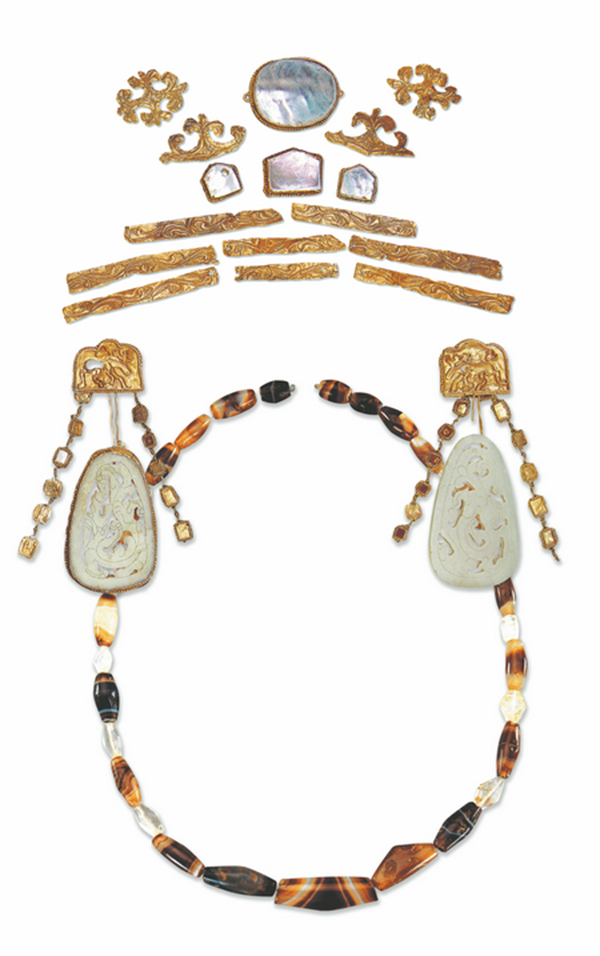
A set of accessories consisting of a crown, earrings and a necklace.CHINA DAILY
"It's not hard to imagine the wealth and status of the wearer during her lifetime," Li says.
Archaeologists believe it belonged to a noble of the nomadic Xiongnu people in the early Western Han Dynasty (206 BC-AD 24) and is, so far, the only known female headpiece of its kind from that period.
The main style of the crown and accompanying jewelry is influenced by Central Plains culture, while the animal motifs that adorn its top retain the characteristics of northern nomadic culture. The glass and amber beads on the crown were pretty common in the Central Asian region, while the craftsmanship carries traces of ancient Western civilizations.
In Li's eyes, the value of these items lies not only in their splendid appearance, but also in the cultural inclusiveness they embody.
Whenever Li has time, he will tour the museum, where he has worked for more than 20 years.
"Especially when temporary and special exhibitions are on," he says, adding that his major focus has been bronzeware.
"Items from Ordos belong to the north, mainly found along the Great Wall, and they are a good complement to those found in the Central Plains area," he adds.
Speaking about their differences, Li says the northern items bear engraved animal patterns and were closely related to nomads' wars and production activities, while those from the central area of the country leaned toward sacrificial culture.
Whenever he stands in front of the exhibits in the museum, Li says he feels as if he is traveling thousands of years back in time to engage in a profound dialogue with them.
Born and bred in Ordos, Li has been exposed to the fascination of cultural relics since childhood, when he would accompany his father to work at a local museum. During holidays, he followed his parents to the countryside and engaged in cultural relic surveys.
The influence of those formative years saw him opt for history, cultural heritage and museology studies at Inner Mongolia University in Hohhot, the region's capital city.
"It helped make my history knowledge more systematic, and paved the way for my later research," Li says.
After graduation, he went straight to work at the museum, where he was first in charge of cultural relic collection, authentication and protection.
It didn't take long before he realized the line of work requires a deep integration of theory and practice.
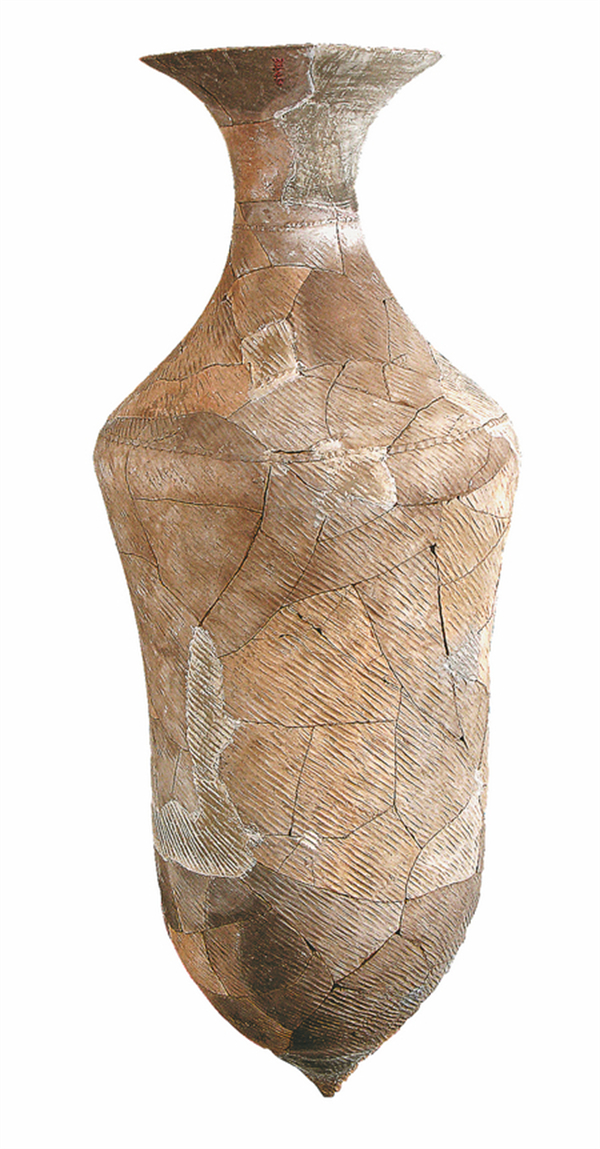
Trumpet-mouthed pointed-base vase. CHINA DAILY
"I found myself short of the necessary expertise at work, especially when it came to items with profound cultural backgrounds," Li says.
That was when he decided to make further inroads into the field by pursuing a master's degree in cultural relics and museology at Inner Mongolia University in 2005, returning to the museum two years later.
Since then, his responsibilities have grown to cover exhibition arrangement, social education, and research and development of cultural and creative products.
Li has come to see the museum as a cultural reception hall, which houses the common spiritual wealth of humanity, and his colleagues and himself are their guardians.
"The first thing we have to do is impart the stories behind them, (including) the deeper culture and new archaeological findings, so they can be seen and understood by more people," Li says.
In the late 2000s, Li and his colleagues started to develop creative cultural items to promote the museum.
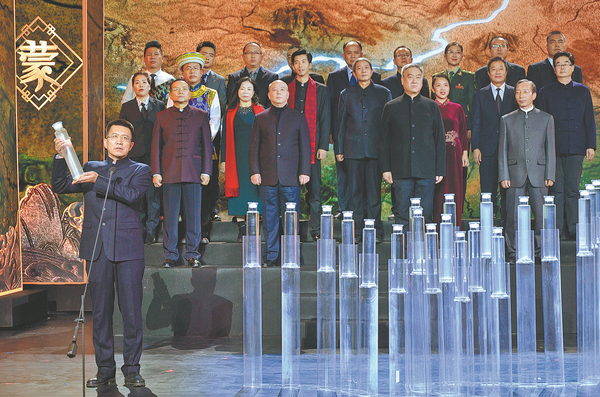
Li highlights the significance of the cultural relics at the Ordos Museum on the popular TV program National Treasure. CHINA DAILY
"It was more about simply copying the appearance of cultural relics, such as bronze items, at the beginning," Li recalls.
As time moved, they have been able to extract distinctive elements from those historical items and then create brand-new products.
Li is still impressed by how his colleagues have been enthusiastically brainstorming and delivered more than 200 popular creative items bearing the museum's characteristics.
The blind box fragrance candle has been among the most popular. Different bronze ornaments will be revealed after the candle is burned out.
"The process of the candle burning is like archaeologists excavating artifacts, allowing you to experience the excitement of discovering the treasures for the first time," Li says.
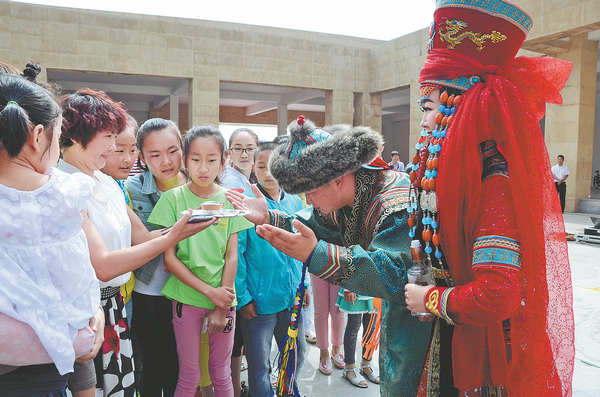
The exterior of the Ordos Museum. Visitors experience intangible cultural heritage at the museum. CHINA DAILY
Another creative item Li takes pride in is the incense burner, which was inspired by an eagle-topped golden crown on show at the museum.
"We retained the eagle element and took the liberty of creating a pedestal in the shape of a lotus leaf," Li says.
"It suits a modern aesthetic and the incense can be placed horizontally or vertically, while ensuring the ashes won't spill over," he adds.
Other popular souvenirs include bronze knives and sword-shaped USB flash drives, through which the museum wanted to convey the collision of history and modernity.
Wang Dan, who also works at the museum, appreciates Li's rigorous yet humorous attitude at work.
"He is a leader with a wealth of ideas and creativity, possesses great interpersonal skills and willingly collaborates with everyone," Wang says.
She says that he is often eager to apply his expertise to the cultural and creative products and is committed to learning together with the team at the museum.
"Li not only provides a sense of enjoyment in the workplace but also creates opportunities and a platform for everyone to showcase their talents," she adds.
In 2021, the museum was merged with Ordos bronzeware museum and Ordos revolutionary history museum, offering richer content to visitors.
Shortly afterward, Li and his colleagues started exploring new channels to promote the museum.
The museum has worked with the local airport to open up shops selling its cultural items.
"The idea is to enable visitors to see those products the moment they set foot in Ordos," Li says.
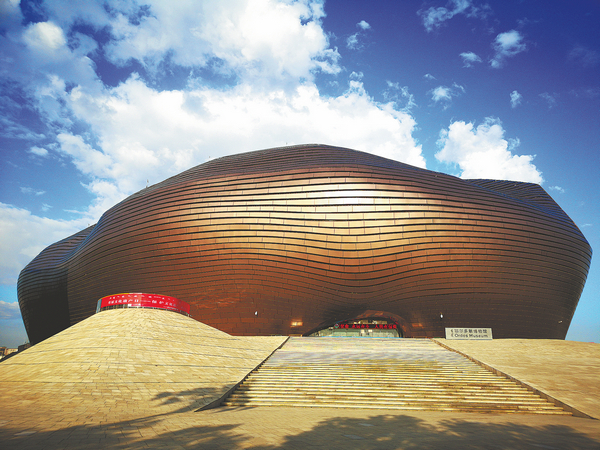
Li highlights the significance of the cultural relics at the Ordos Museum on the popular TV program National Treasure. CHINA DAILY
The team also opened a Douyin account, where everyone has learned to film and edit short videos.
"We need to figure out what to film to capture people's attention and how to do so from innovative perspectives," Li says.
"At the same time, the content should offer depth without being tasteless," he adds.
Li encouraged his team to communicate and speak their mind, just like they did a decade ago when they first started work on the creative cultural items.
Their efforts have paid off, as more people have got to know the museum and become interested in the history and culture of Ordos through Douyin.
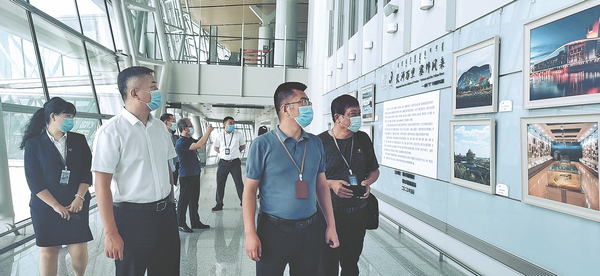
Li Rui (center) tours the gallery introducing the Ordos Museum at the airport in Ordos, Inner Mongolia autonomous region. CHINA DAILY
The videos featuring the museum's collection have intrigued many people online, who have left comments that asked them to upload more videos and that show interest in visiting Ordos.
To date, Li and his colleagues have picked and chosen approximately 30 creative cultural items to sell on Douyin.
"They are deemed among the most practical and can be appreciated as art," Li says.
In his opinion, the most direct way to make cultural relics come alive is to have them involved in people's everyday lives.
"Allowing interested individuals to take products home that bear their traits is one way to do that," he says.
Contact the writers at yangfeiyue@chinadaily.com.cn



 Print
Print Mail
Mail
